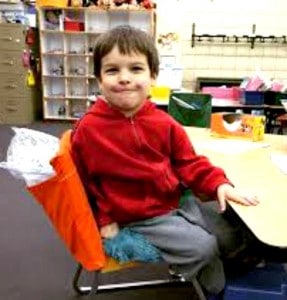
The researchers assessed 52 boys between ages 8 and 12. Twenty-nine of the boys were diagnosed with ADHD. The remaining boys had no clinical disorders. The researchers observed the boys and recorded their activity with a high-speed camera as they completed a series of standardized tasks. The tasks tested the boys’ working memory—the ability to store information for cognitive tasks like learning and reasoning. In the task, a jumble of numbers and one letter flashed on a screen. The boys had to order the numbers.
The results expand on previous findings about ADHD and fidgeting. Prior work demonstrated that children with ADHD exhibit excessive movement when they need executive functions. The current study suggests that this movement is purposeful. The children with ADHD who moved the most during the task performed the best. The movement may help them remain alert while performing cognitive functions. Children without ADHD fidgeted during the task too. However, for children without ADHD, increased movement was linked to worse performance.
Study author Mark Rapport, head of the Children’s Learning Clinic at UCF explains that the findings are in contrast to typical interventions for ADHD. “The typical interventions target reducing hyperactivity. It’s exactly the opposite of what we should be doing for a majority of children with ADHD. The message isn’t ‘Let them run around the room,’ but you need to be able to facilitate their movement so they can maintain the level of alertness necessary for cognitive activities.”
Encouraging children with ADHD to fidget with purpose would be a radical shift in the way ADHD is treated. The findings suggest that children with ADHD might do better in class if they could sit on exercise balls or stationary bikes.
This research is published in the Journal of Abnormal Child Psychology.
Previous news in ADHD:



 © 2025 Unyte Health US Inc.
© 2025 Unyte Health US Inc.